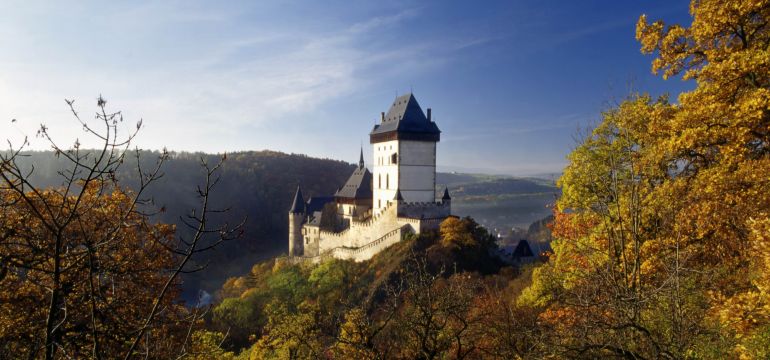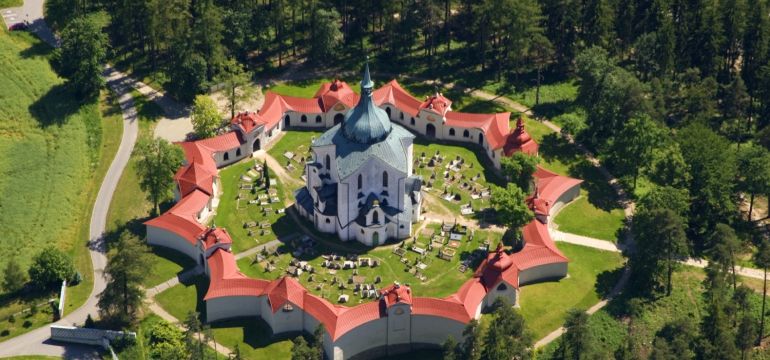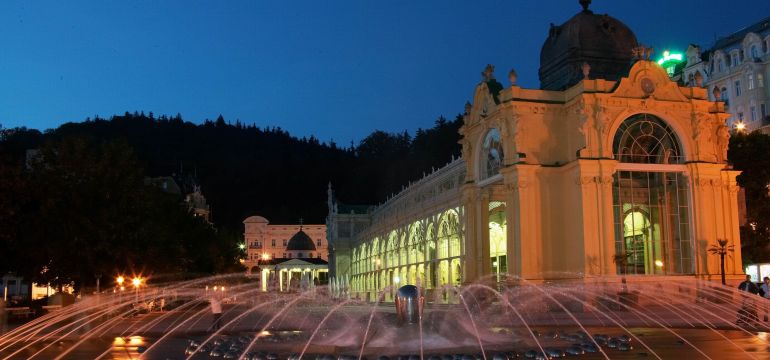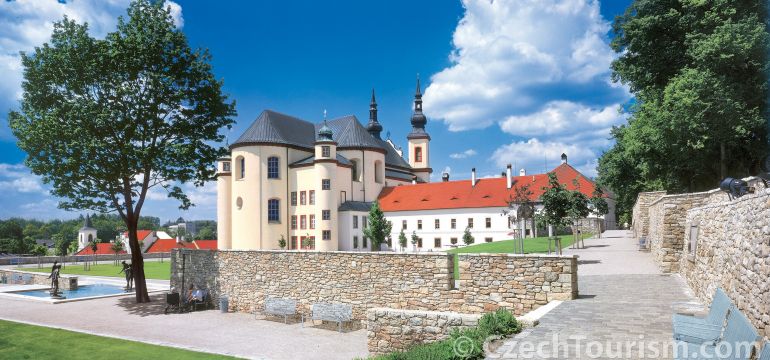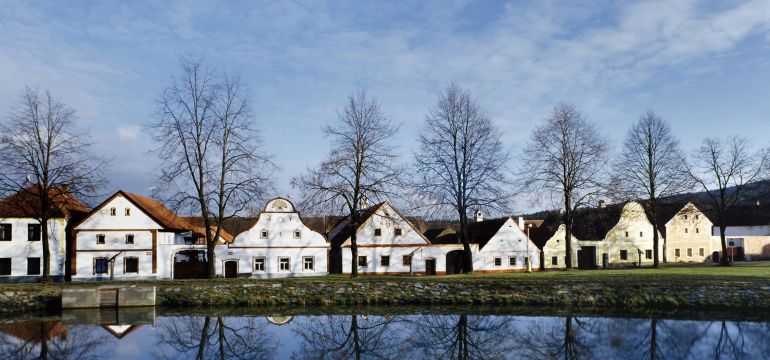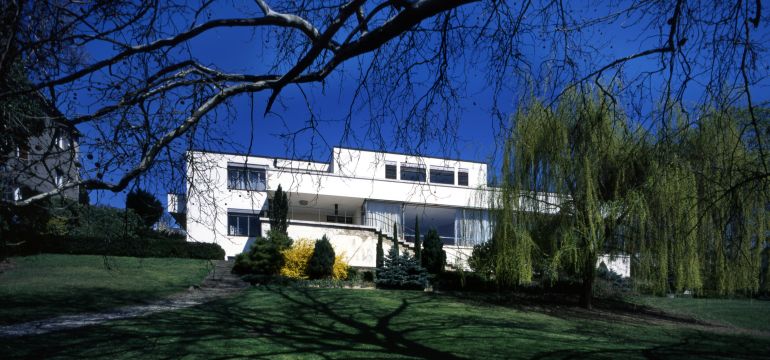about czech republic
 The small republic in the heart of the European continent is the youngest form of the Czech state, which has been in existence for almost twelve hundred years. It is a country with a rich and eventful history, a country, or more precisely a union of several historic lands, with a rich cultural and artistic tradition imprinted on hundreds and thousands of towns, castles, chateaux and religious structures all over Bohemia, Moravia and Silesia, as well as on the cultivated Czech landscape itself.
The small republic in the heart of the European continent is the youngest form of the Czech state, which has been in existence for almost twelve hundred years. It is a country with a rich and eventful history, a country, or more precisely a union of several historic lands, with a rich cultural and artistic tradition imprinted on hundreds and thousands of towns, castles, chateaux and religious structures all over Bohemia, Moravia and Silesia, as well as on the cultivated Czech landscape itself.
Geographically, the Czech Republic and its historical lands (Bohemia, Moravia, and Silesia) are divided into 14 local administrative units controlled by regional administrations. Small as they are, the individual provinces have a lot to offer within a few miles because they often have significant differences in history and development.
 In Bohemia, a wall of border mountain ranges and hills has protected from time immemorial the lowlands around the river Vltava and particularly around the calm Labe River against northern winds and enemy invasions. South Bohemia is a region with probably the highest number of historic monuments that are still bustling with activity. Its many castles, chateaux and historic towns, among them Hluboka, Rozmberk, Cesky Krumlov, Jindrichuv Hradec, Telc, and Trebon invite to a visit.
In Bohemia, a wall of border mountain ranges and hills has protected from time immemorial the lowlands around the river Vltava and particularly around the calm Labe River against northern winds and enemy invasions. South Bohemia is a region with probably the highest number of historic monuments that are still bustling with activity. Its many castles, chateaux and historic towns, among them Hluboka, Rozmberk, Cesky Krumlov, Jindrichuv Hradec, Telc, and Trebon invite to a visit.
A half-hour flight from Prague takes you to the more remote part of the Czech Republic, Moravia, whose capital Brno has become known as a congress and exhibition centre. The south of Moravia is known for the excellent wines produced in its extensive vineyards. Here you will also find the plum orchards, from which emanates the familiar smell of the Slovácko plum brandy.
Bohemia, Moravia, and the harsher, heavily industrialized Silesia have one thing in common - the human dimension of the landscape, which is not one of crushing monumentality but rather an inviting, and cozy one.
 The moment a foreign visitor crosses any one of the frontier mountains or the Austrian-Moravian river Dyje, he enters an extremely varied natural environment, filled with changing landscapes of historical towns and castles. He encounters boundless forests in the Sumava mountains, the harsh Krkonose or Giant Mountains (the two mountain chains declared National Parks), the melancholy Jeseniky or Ash Mountains as well as the bright Beskydy Mountains. Even today beautiful works of folk architecture adorns the slopes of all these ranges. Inland the visitor would see the hills of the Czech Central Highlands (volcanic origin) along with tortuous ravines among which rise hundreds of sandstone towers: the landscapes of the Bohemian Paradise and the Prachovske Skaly. Or he might prefer to seek out the Bohemian-Moravian Highlands and the South Moravian country along the Dyje River, the most beautiful parts of which from another National Park. The charms of the Moravian and Bohemian Karst and the Jizerske Mountains await their discoverers.
The moment a foreign visitor crosses any one of the frontier mountains or the Austrian-Moravian river Dyje, he enters an extremely varied natural environment, filled with changing landscapes of historical towns and castles. He encounters boundless forests in the Sumava mountains, the harsh Krkonose or Giant Mountains (the two mountain chains declared National Parks), the melancholy Jeseniky or Ash Mountains as well as the bright Beskydy Mountains. Even today beautiful works of folk architecture adorns the slopes of all these ranges. Inland the visitor would see the hills of the Czech Central Highlands (volcanic origin) along with tortuous ravines among which rise hundreds of sandstone towers: the landscapes of the Bohemian Paradise and the Prachovske Skaly. Or he might prefer to seek out the Bohemian-Moravian Highlands and the South Moravian country along the Dyje River, the most beautiful parts of which from another National Park. The charms of the Moravian and Bohemian Karst and the Jizerske Mountains await their discoverers.
 A counterpart of its natural environment is the culture of a country, and the Czech Republic can compete with the rest of Europe even in this respect... Important monuments of all architectural styles can be seen not only in the capital city of Prague, with its important historical buildings, museums and art galleries, large music and theatre ensembles, but also in dozens of urban monument reserves throughout the Republic. The Czech Republic has been known as the country of castles and chateaux many of which lie within these urban monument reserves. A large number of chateaux and castles have been renovated in recent years and offer visitors not only the informative tours provided by guides but also museum collections and classical music concerts. The many castle ruins will inspire romantic natures. Cities like Prague, Cesky Krumlov, Telc, Zdar nad Sazavou, Kutna Hora and Lednice - Valtice Complex are included on the UNESCO World Heritage List. In addition to the many festivals, that have been taking place regularly in Vsetin, Kyjov and Straznice for many years already, folk tradition and customs can be found throughout both Bohemia and Moravia at every time of the year: Shrovetide, Easter, Witches' Day, Royal Ride, grain harvest and vintage festivals are just a few examples. One only has to select the right region at the right time to see with one's own eyes that Czech folklore in is still alive and holding a leading position in Europe.
A counterpart of its natural environment is the culture of a country, and the Czech Republic can compete with the rest of Europe even in this respect... Important monuments of all architectural styles can be seen not only in the capital city of Prague, with its important historical buildings, museums and art galleries, large music and theatre ensembles, but also in dozens of urban monument reserves throughout the Republic. The Czech Republic has been known as the country of castles and chateaux many of which lie within these urban monument reserves. A large number of chateaux and castles have been renovated in recent years and offer visitors not only the informative tours provided by guides but also museum collections and classical music concerts. The many castle ruins will inspire romantic natures. Cities like Prague, Cesky Krumlov, Telc, Zdar nad Sazavou, Kutna Hora and Lednice - Valtice Complex are included on the UNESCO World Heritage List. In addition to the many festivals, that have been taking place regularly in Vsetin, Kyjov and Straznice for many years already, folk tradition and customs can be found throughout both Bohemia and Moravia at every time of the year: Shrovetide, Easter, Witches' Day, Royal Ride, grain harvest and vintage festivals are just a few examples. One only has to select the right region at the right time to see with one's own eyes that Czech folklore in is still alive and holding a leading position in Europe.
History
 The most important historical eras of the Czech Lands are the epoch of the Great Moravian Empire, marked by the influence of Slavonic liturgy (9th century), the reign of the Bohemian princes and kings of the house of Premyslids (9th to 13th century) and, later on, the reign of Charles IV (1316-1378). Also very significant are the period of the Hussite religious and social revolutions (early 15th century) and the pedagogical activities of J. A. Komensky (Comenius, 1670). This leads us into the time of the anti-Hussite counter-reformation, marked with conflicts but also with collaboration with the German element. This period brings us to the time of the National Revival (19th century) and, finally, to the birth of independent Czechoslovakia (1918). In recent history the Treaty of Munich, World War II and forty years of Soviet Communist rule heavily suppressed the country. This time of trials was interrupted by short flashes of hope in the course of the first post-war years and by the Prague Spring of 1968. The "Velvet Revolution" of autumn 1989, headed by Vaclav Havel, gave the impulse for a regeneration of the whole country. Nonetheless, this was the time when in Slovakia tendencies for independence began to rise. The Czech Republic has become one of the most visited countries of Europe.
The most important historical eras of the Czech Lands are the epoch of the Great Moravian Empire, marked by the influence of Slavonic liturgy (9th century), the reign of the Bohemian princes and kings of the house of Premyslids (9th to 13th century) and, later on, the reign of Charles IV (1316-1378). Also very significant are the period of the Hussite religious and social revolutions (early 15th century) and the pedagogical activities of J. A. Komensky (Comenius, 1670). This leads us into the time of the anti-Hussite counter-reformation, marked with conflicts but also with collaboration with the German element. This period brings us to the time of the National Revival (19th century) and, finally, to the birth of independent Czechoslovakia (1918). In recent history the Treaty of Munich, World War II and forty years of Soviet Communist rule heavily suppressed the country. This time of trials was interrupted by short flashes of hope in the course of the first post-war years and by the Prague Spring of 1968. The "Velvet Revolution" of autumn 1989, headed by Vaclav Havel, gave the impulse for a regeneration of the whole country. Nonetheless, this was the time when in Slovakia tendencies for independence began to rise. The Czech Republic has become one of the most visited countries of Europe.
